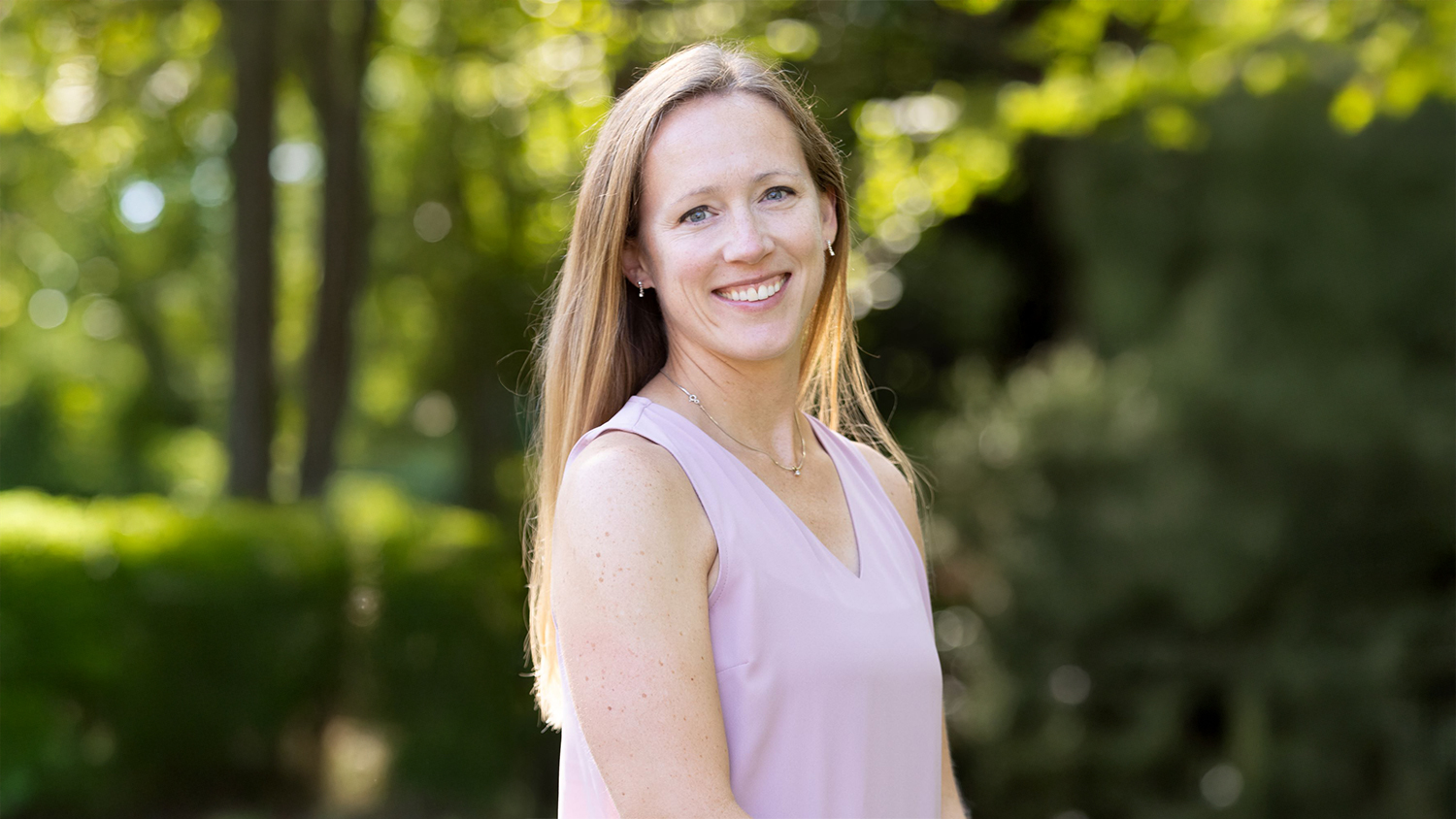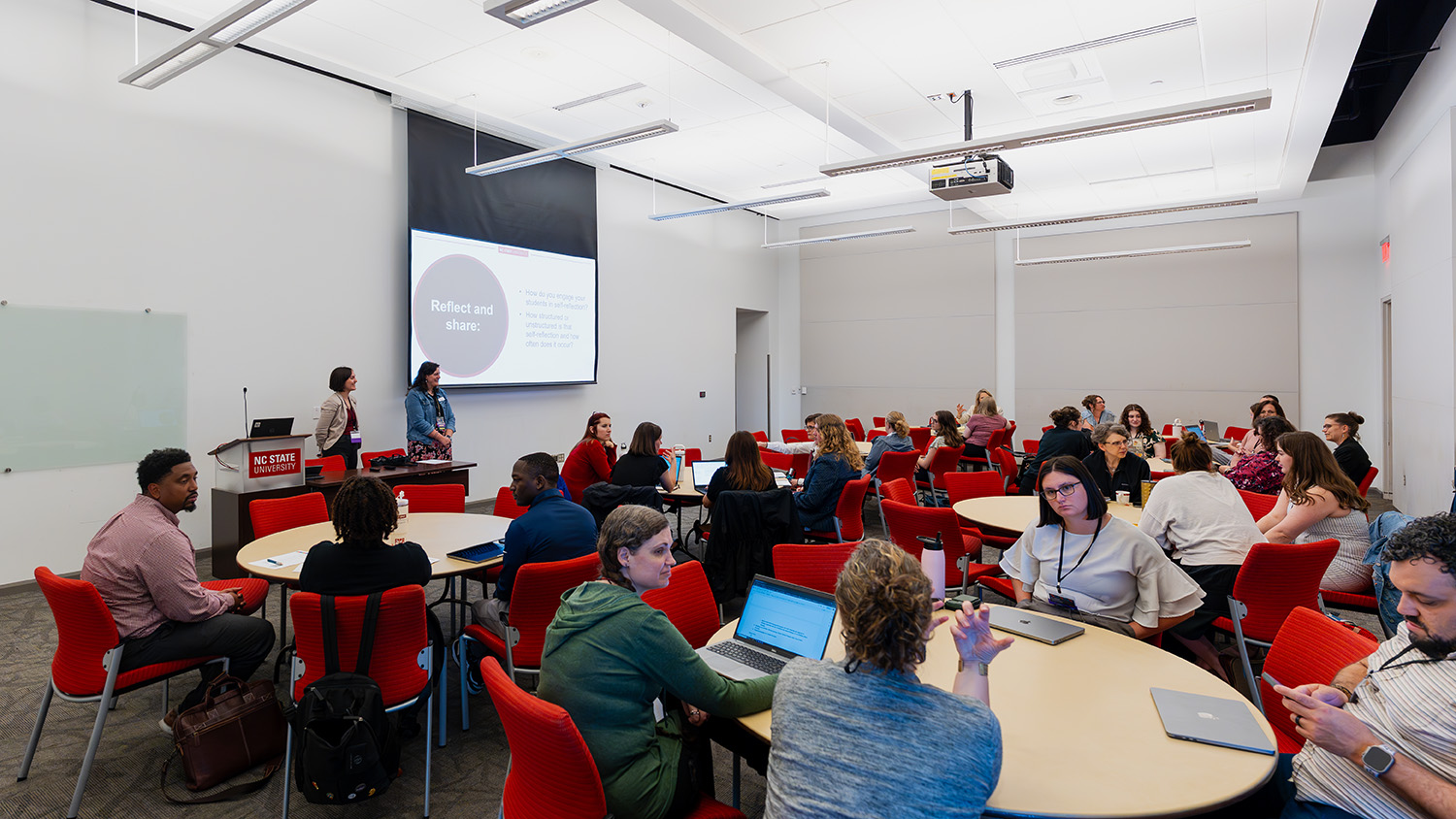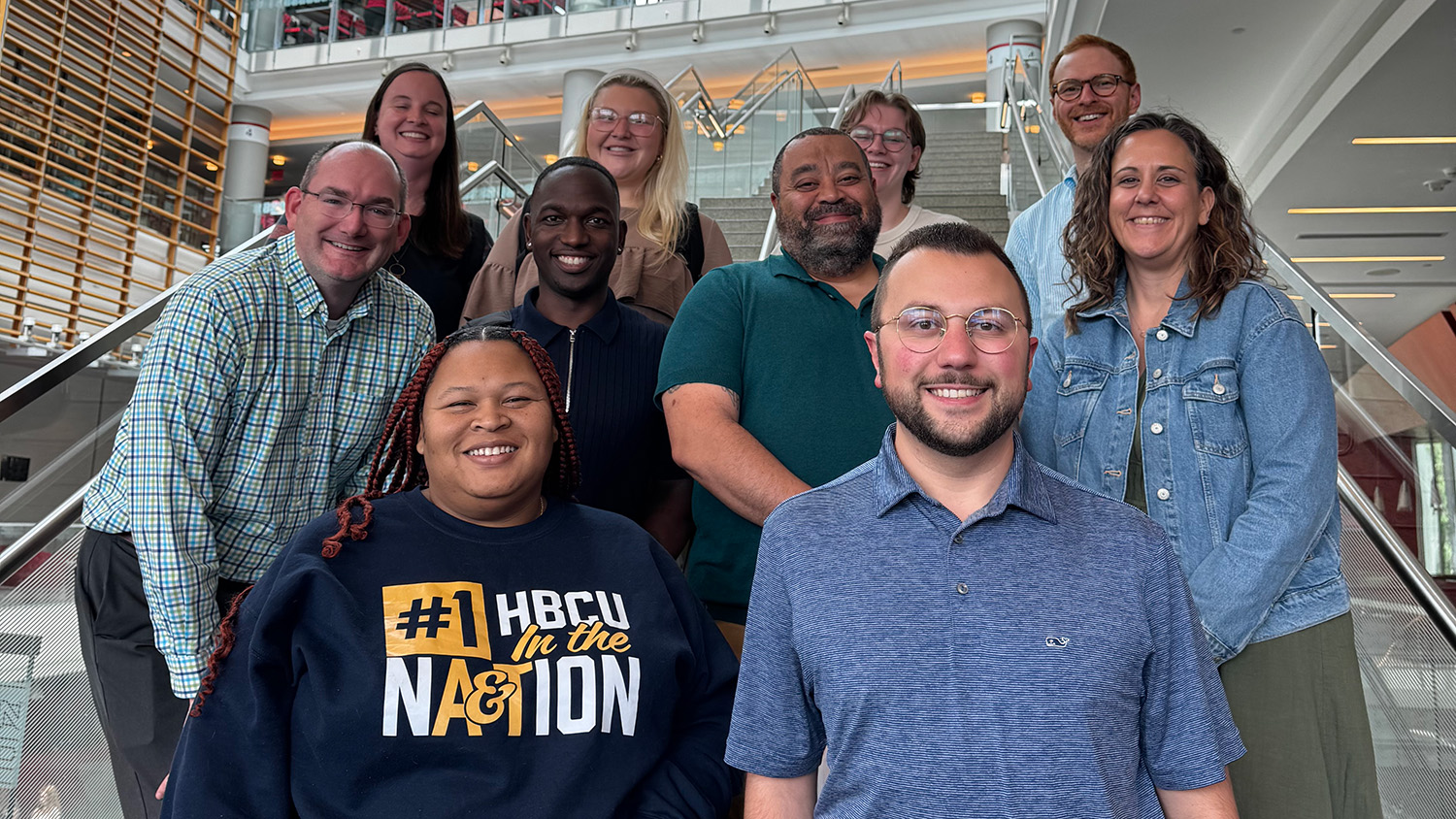Building (and Moving) Barriers
A four-person DASA Facilities team built and installed over 100 stationary plexiglass barriers and around 55 portable ones around campus this summer.
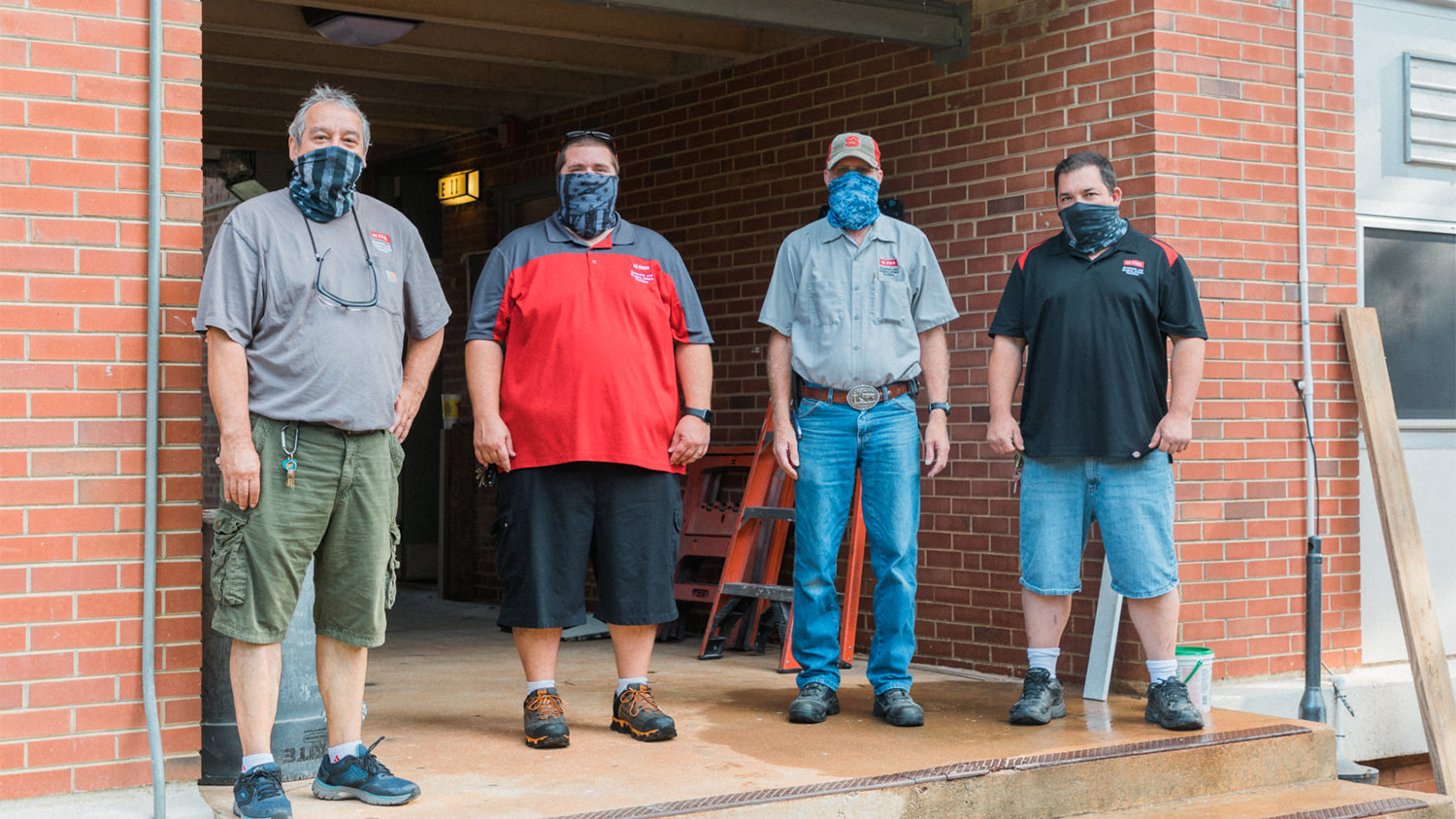
When James Carpenter, carpentry supervisor for DASA Facilities, was tasked with building and installing plexiglass barriers around campus, he envisioned stationary shields around office desks and podiums in classrooms. However, his team’s first order came from an unlikely source.
“Our first order, and one of the biggest ones, ended up being for the music department because they had band camp starting before anybody else came back,” Carpenter said. “They needed quite a different setup than what we were originally thinking. They wanted some portable barriers, and they had a piano that had to sit side by side with another piano with a barrier in between. They just had some different challenges than we anticipated, but we figured it out.”
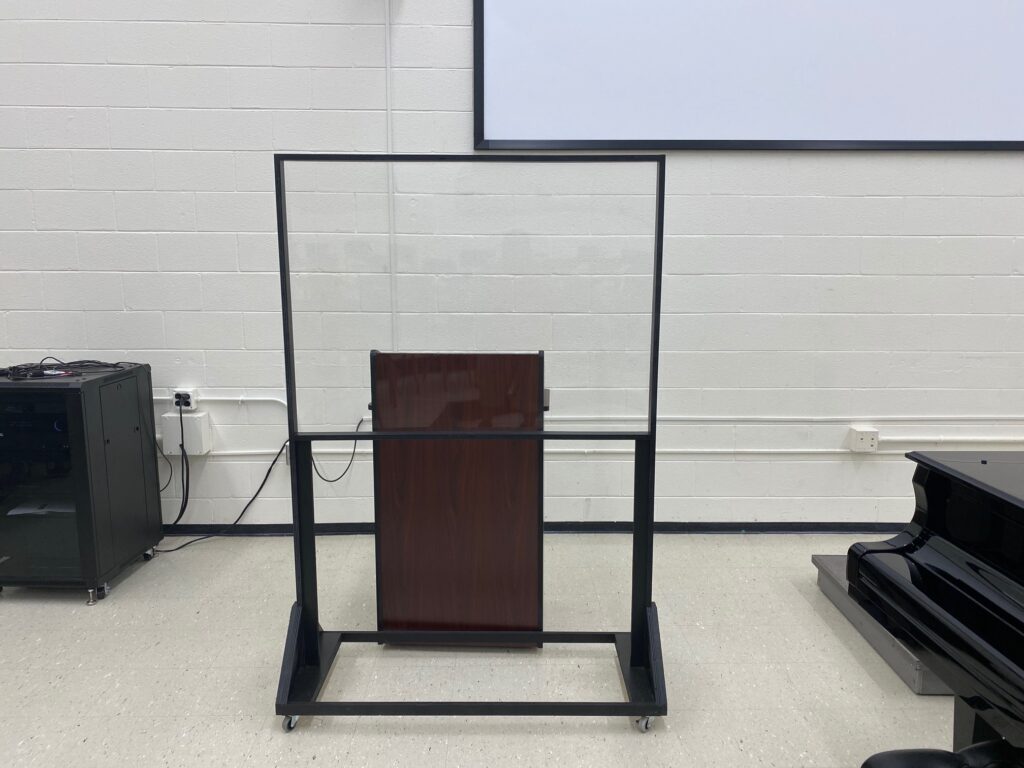
While “figuring it out” and being flexible has been a central theme for many members of the Wolfpack community over the last several months of the COVID-19 pandemic, it’s been more of a mantra for Carpenter and his four-person DASA Facilities team. Upon being directed to build plexiglass for a variety of spaces within the Division of Academic and Student Affairs in May, Carpenter started ordering materials. He bought a surplus of plexiglass, fearing a shortage of materials due to high demand. At the suggestion of one of his employees, Dale Lefler, he also ordered a healthy supply of plywood that could be cut and sized for the bases of the plexiglass barriers. The plywood also ended up being about a third of the cost of the premade bases being sold with the plexiglass.
“We didn’t know what the year was going to look like, so we were trying to save where we could,” Carpenter said. “We wanted to put out a good product that was affordable, but would last for however long it’s needed.”
After gathering materials, Carpenter and his team went right to work building 100-plus stationary plexiglass barriers and about 55 portable ones. Lefler and Ray Corbett were the primary builders, and in the interest of physical distancing in the DASA Facilities workshop, they alternated work spaces with one working in the shop and one in the breezeway outside. The fourth team member, Vladimir Wall, welded metal wheels onto the portable barriers and developed a specially designed barrier for the front desk in the TRIO offices.
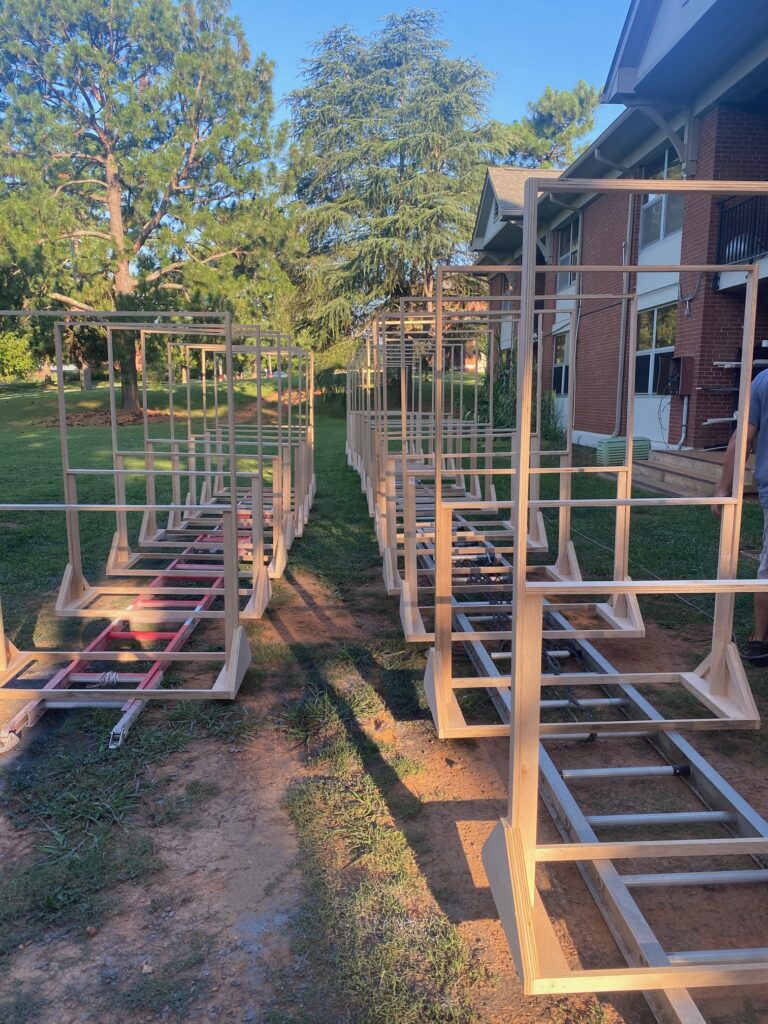
“From May 18 until move-in, they were cutting plexiglass and building barriers,” Carpenter said. “They all volunteered to work extra shifts and come in on the weekends, and at one point they made 15 in six hours or so. Their willingness and ability to get it done was just amazing to me.”
After making the plexiglass barriers and after the Paint Shop put on the finishing touches with black paint, the DASA facilities team installed them all over campus. Some of the most notable places included the music department, the Gregg Museum, TRIO offices, the Crafts Center and woodworking studio, Naval and Air Force ROTC classrooms, 12 residence halls, and Talley Student Union.

The project came down to the wire, and during new student move-in Carpenter and his crew were called upon to relocate the barriers from other DASA departments for University Housing staff to use as they greeted new students — before moving them all back again for the start of classes on August 10. The whole team was also heavily involved in move-in at Lee and Sullivan Halls, managing the elevator capacity and ensuring the landings didn’t get overcrowded. They used radios and developed color-coded ceiling tiles to communicate between floors.
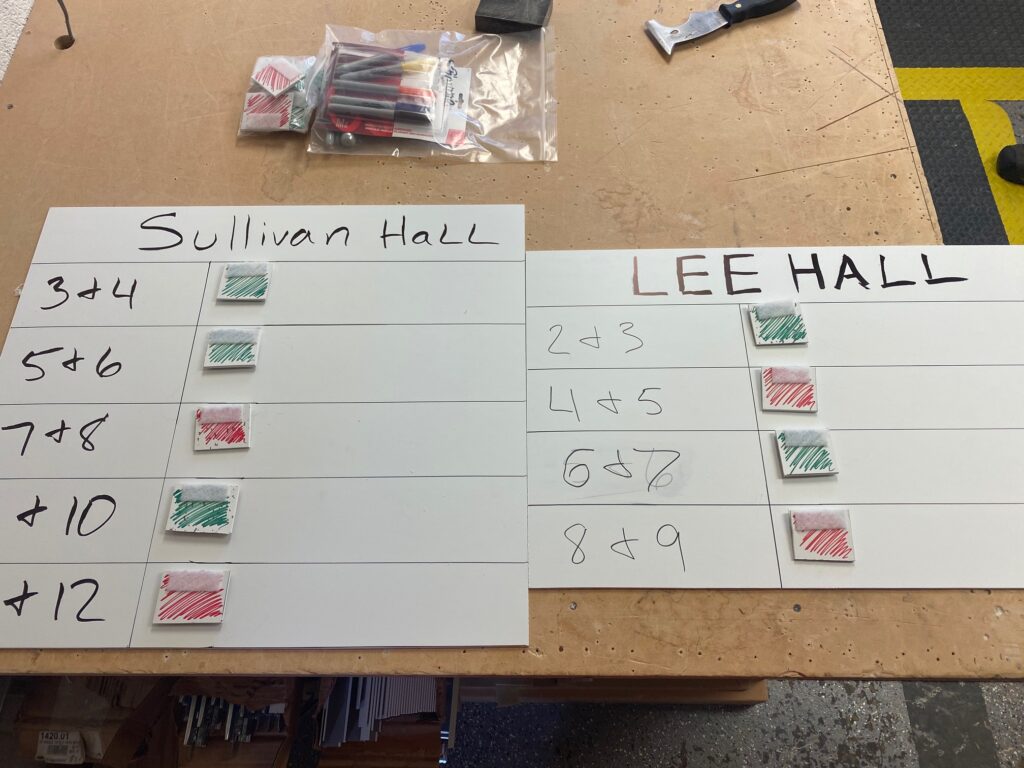
Throughout the process, Carpenter was impressed with not only the collaboration of his team, but also with his colleagues in other departments across the division.
“Not one DASA partner complained, and everyone was extremely flexible with their schedules,” Carpenter said. “It was a great experience, even with everything everybody else had going on. Everybody was great to work with.”
When NC State made the announcement to reduce on campus housing a few weeks later, Carpenter and his team were once again called upon to help. This time, they were tasked with building and installing 12 key deposit boxes for student check-out. Once again, his team got right to work and had the project done in about a day.
“One of the most impressive things between all of us has been the communication,” Carpenter said. “We’ve all bounced ideas off one another, and everyone has really taken initiative. I’m so proud of this team, and we’re ready for whatever comes next.”
- Categories:
